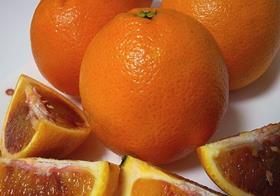
Chinese orange import volumes are expected to fall by 75,000 tonnes in the 12 months to 31 October 2014, according to a Global Agriculture Information Network report published by the USDA.
The report points to a blanket suspension on Californian citrus for the decline, with US orange shipments to the Asian nation dropping by 36 per cent last season, after market access was cut off in April. Consequently, the US is no longer China’s primary fresh orange supplier.
The North American nation has also been replaced as China’s largest supplier of fresh mandarins, with Australia now holding the majority market share.
Unlike oranges, Chinese mandarin/tangerine imports are expected to rise this season, with volumes up 17 per cent to 14,000 tonnes. Grapefruit imports are also tipped to rise significantly, with the USDA predicting a 47 per cent increase in volume in the 12 months to 30 September, due to strong demand from high-end consumers who appreciate the fruit’s nutritional benefits.
On the export front, China’s mandarin/tangerine shipments are forecast at 800,000 tonnes in 2013/14, up 14 percent from 702,000 tonnes last season. Improved trade conditions in the Indonesian market are expected to drive much of this growth, with the South East Asian nation widely tipped to relax its contentious trade restrictions. Chinese mandarin imports fell by 60 per cent in 2012/13 due to the imposition of the restrictions, which included a blanket ban on the importation of 13 horticultural products.
Season-on-season orange exports are forecast to climb 20 per cent to 100,000 tonnes in 2013/14 on the back of a solid national harvest, which should yield over 7m tonnes. Major orange producing provinces, including Sichuan, Guangxi, and Chongqing, are expected to have bumper harvests due to favorable growing conditions and enhanced orchard management.
However, the discovery of citrus greening disease (Huanglongbing) threatens to derail the promising production outlook for the Jiangxi region. If the disease spreads past Jiangxi’s southern counties, industry sources fear it could have disastrous consequences for production in the area over then next half of the decade. Jiangxi government officials had forecast production to reach 2m tonnes by 2015 and 3.5m tonnes by 2020.



